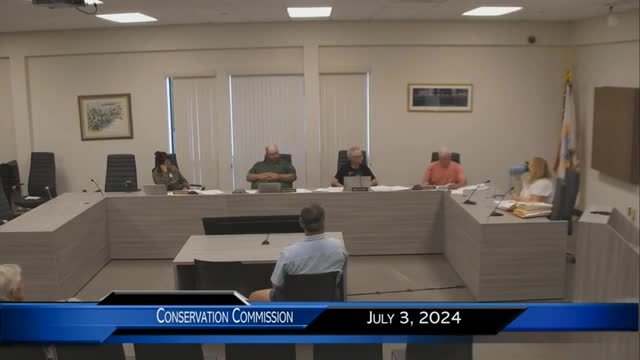Scallop farming project aims to clean coastal waters
July 04, 2024 | Town of Harwich, Barnstable County, Massachusetts

This article was created by AI summarizing key points discussed. AI makes mistakes, so for full details and context, please refer to the video of the full meeting. Please report any errors so we can fix them. Report an error »

In a recent government meeting, discussions centered around innovative aquaculture practices, specifically the cultivation of scallops, and the implications of proposed bulkhead replacements on local ecosystems.
The meeting highlighted a new scallop farming initiative, with participants noting that scallops are single-season breeders, requiring careful management to ensure they reach maturity by July. The farming method involves using nets submerged in water, allowing scallops to filter feed and contribute to water quality improvement. Preliminary data suggests that for every 2,000 scallops grown, approximately one kilogram of nitrogen is removed from the water.
Concerns were raised regarding the potential environmental impact of replacing an existing wooden bulkhead with a solid sheet pile structure. One participant questioned whether the new bulkhead would exacerbate erosion and marsh loss, as the current structure has significant holes allowing sand to wash out. The response indicated that the new design would prevent such erosion, as it would not permit sand to escape from behind it.
Further discussions addressed maintenance dredging, with assurances that it would be infrequent—potentially every ten years or more—due to the solid nature of the new bulkhead and the existing depth of the water. The dredging is intended to maintain a minimum water depth of six feet beneath the scallop floats, ensuring the viability of the scallop farming project.
Overall, the meeting underscored a commitment to sustainable aquaculture practices while addressing environmental concerns related to coastal infrastructure. Participants expressed optimism about the potential benefits of the scallop farming initiative, both for local ecosystems and the fishing industry.
The meeting highlighted a new scallop farming initiative, with participants noting that scallops are single-season breeders, requiring careful management to ensure they reach maturity by July. The farming method involves using nets submerged in water, allowing scallops to filter feed and contribute to water quality improvement. Preliminary data suggests that for every 2,000 scallops grown, approximately one kilogram of nitrogen is removed from the water.
Concerns were raised regarding the potential environmental impact of replacing an existing wooden bulkhead with a solid sheet pile structure. One participant questioned whether the new bulkhead would exacerbate erosion and marsh loss, as the current structure has significant holes allowing sand to wash out. The response indicated that the new design would prevent such erosion, as it would not permit sand to escape from behind it.
Further discussions addressed maintenance dredging, with assurances that it would be infrequent—potentially every ten years or more—due to the solid nature of the new bulkhead and the existing depth of the water. The dredging is intended to maintain a minimum water depth of six feet beneath the scallop floats, ensuring the viability of the scallop farming project.
Overall, the meeting underscored a commitment to sustainable aquaculture practices while addressing environmental concerns related to coastal infrastructure. Participants expressed optimism about the potential benefits of the scallop farming initiative, both for local ecosystems and the fishing industry.
View full meeting
This article is based on a recent meeting—watch the full video and explore the complete transcript for deeper insights into the discussion.
View full meeting
